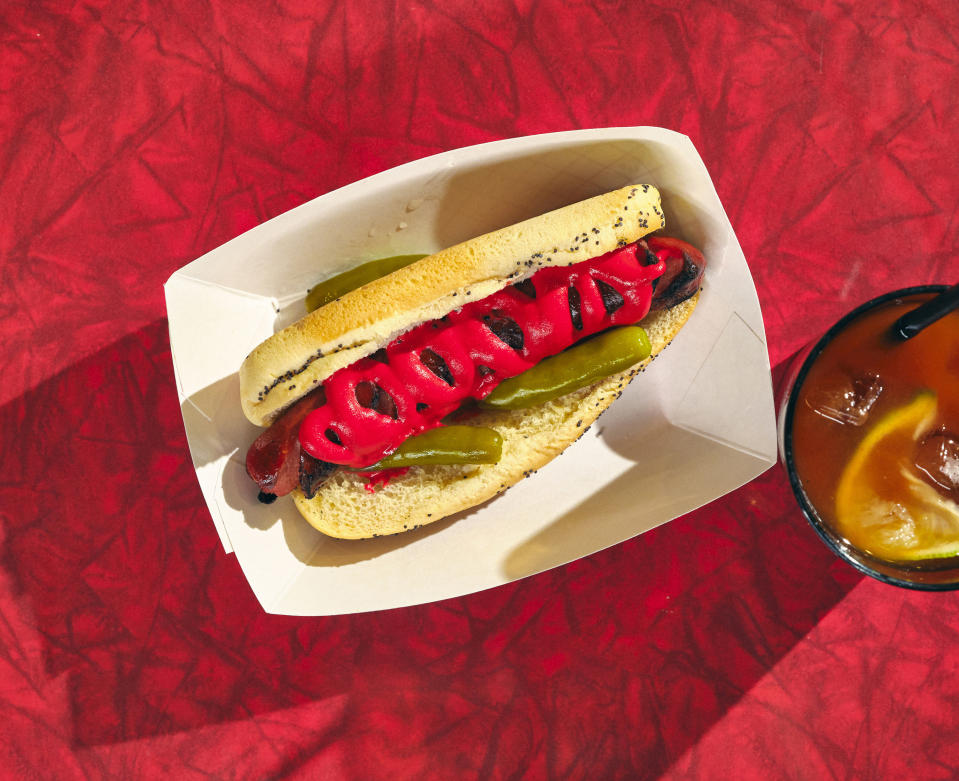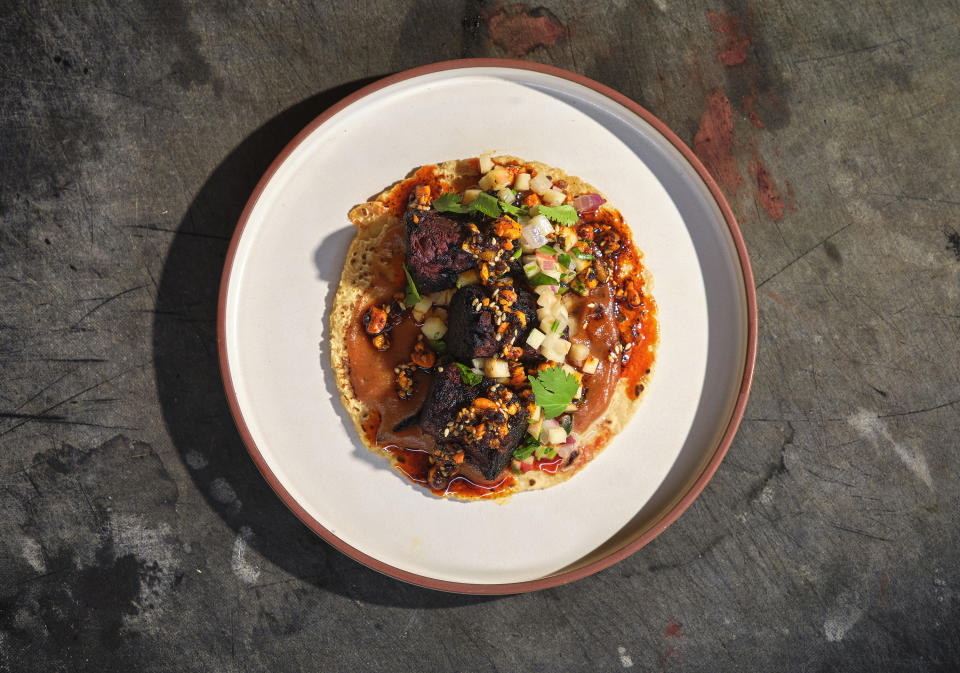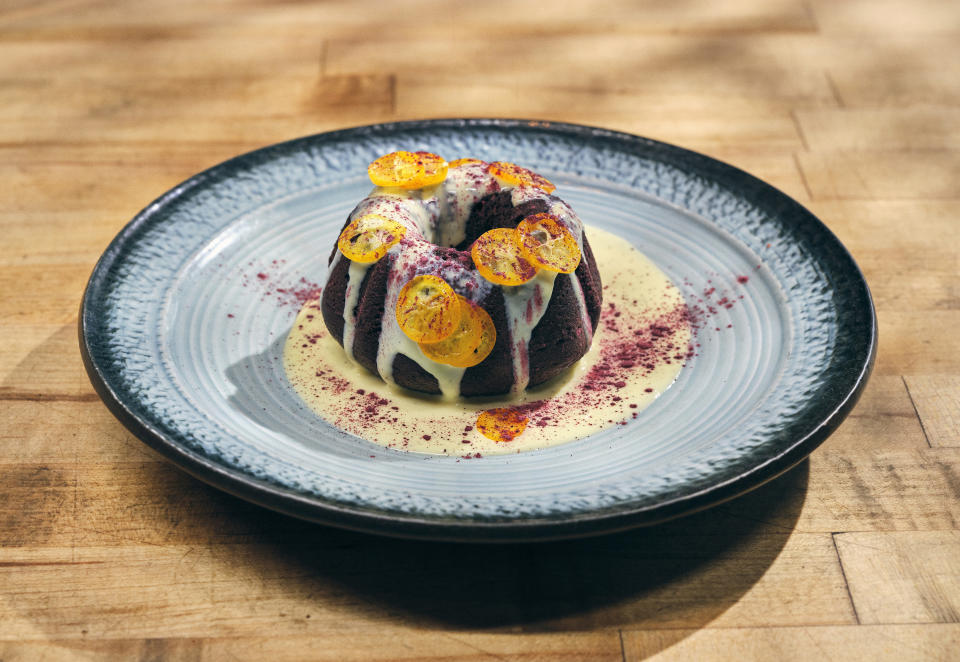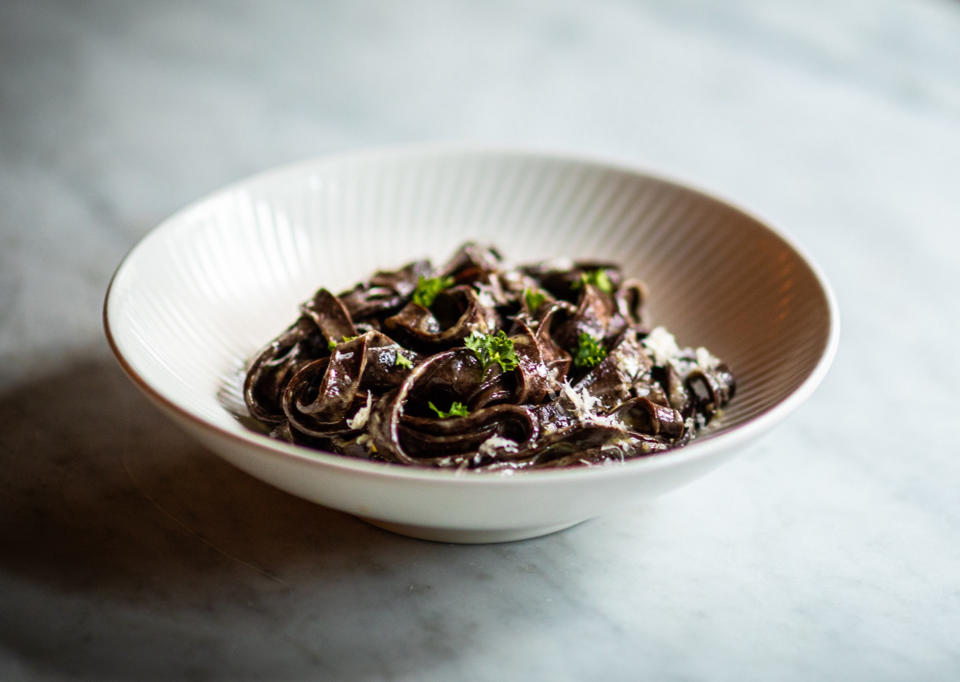Blood Appétit: To spotlight its new exhibition, Field Museum partners with Chicago chefs to create dishes with blood
CHICAGO -- As cooking ingredients go, blood does not come to mind first for many people. A new limited-time collaboration between the Field Museum and eight Chicago restaurants, including Frontier, Celeste, The Wieners Circle and Webster’s Wine Bar, hopes to change that.
Blood Appétit, running through March 8, is a celebration of the Field Museum’s “Bloodsuckers: Legends to Leeches” exhibition and gives diners the opportunity to try dishes that incorporate blood as an ingredient. From pizza and tacos to chocolate cake, the end results just might surprise you.
“It’s pretty cool showcasing how versatile an ingredient blood can be,” said Maggie Holcomb, marketing and advertising director for the Field Museum. “Here, in what we think of as American cuisine, blood isn’t an ingredient. But it’s featured and used all around the world, so it’s not that uncommon when you step outside of our lens.”
“Bloodsuckers” features larger-than-life models, an expansive display of bloodsucking species and interactive exhibits focused on creatures that sustain themselves on blood — think mosquitoes, leeches, lamprey and even vampires. In looking for a special way to showcase the Field’s exhibition, one idea stood out from the rest.
“We thought a unique way to highlight this topic that is unfamiliar to people would be to tap into Chicago’s food scene and the community around us,” Holcomb said.
Positioning it as a culinary challenge, Holcomb reached out to local chefs to gauge interest.
At Avondale’s Parachute, chef/partner Beverly Kim didn’t have to look far for inspiration for her Blood Appétit dish.
“The first thing I thought of was soondae because it’s a popular Korean street snack,” said Kim, whose parents are from South Korea. Made with pig’s blood, pork, sweet rice, black garlic and glass noodles, the sausage is nutritious and great for hangovers, she said. “It puts iron in your blood and brings you back to life.”
At Parachute, Kim dresses up the sausage with fresh greens and herbs (perilla leaves, amaranth greens and radish sprouts) in addition to the traditional Korean seasonings. It’s cooked on the restaurant’s binchotan grill, which provides a soft smoky flavor.
For Kim, utilizing ingredients to their fullest and cutting down on waste is always top of mind.
“Survival created unique and delicious foods that in this day and age we should celebrate, learn more about and preserve their stories, she said. “It takes more craft to take something that is less desirable and turn it into something that is delicious.”
For Marcos Ascencio, chef/partner of Taqueria Chingón, saying yes to the collaboration was a no-brainer. Since it opened three years ago, the Bucktown spot has always featured a version of a morcilla (blood sausage) taco on its menu.
“We were totally down with it,” Ascencio said of the Field Museum partnership.
French culinary techniques come into play for its morcilla, Ascencio said, who credits Taqueria Chingón chef/partner Oliver Poilevey, also behind Le Bouchon and Obelix, for the recipe.
Rather than use the traditional rice in its morcilla, day-old sourdough bread and brioche are combined with pig’s blood for the filler, which creates a custard-like texture. Before serving, the sausage hits the plancha, giving it a crispy exterior. Presented on freshly made corn tortillas, the sausage is paired with a house-made apple and tomato jam, whipped crème fraiche and a nutty salsa macha.
At Logan Square’s Reno, blood sausage is also the star ingredient of its Blood Appétit dish. But for theirs, partner Jason Normann reached out to his friends at Argentinian restaurant Tango Sur, who make morcilla in-house.
For the special, dubbed “Santa Sangre pizza” (sangre is blood in Spanish), Normann opted for Tango Sur’s sweet blood sausage, which is made with pork and beef blood. “Their regular blood sausage would get lost on the pizza,” he said. “I wanted that iron meatiness to come through.”
Chimichurri, a further nod to Argentina, serves as a base for the pie, although the sauce’s inherent garlic-forward flavor was pulled back a bit to allow the blood sausage to shine. A blend of mozzarella and provolone tops the pie, along with strips of roasted red pepper, which look like veins, Normann said, offering a wink to the Blood Appétit theme.
To create his Blood Appétit dish, a blood chocolate bundt cake, Mott St chef/partner Edward Kim approached it as he would any other dish.
“I looked at the blood as just another ingredient and flavoring agent and something fun to use in terms of cooking,” he said.
Looking back to a dish he did pairing strawberries with duck hearts, Kim started thinking about the possibility of blood with chocolate. He knew he was on the right track when Google research turned up a Spanish and Italian pudding made with pig’s blood and chocolate.
Taking into consideration blood’s chemical makeup, he determined it was similar to eggs.
“It’s not your normal liquid,” he said. “It coagulates and has a lot of protein in it”
He replaced one of the three eggs in the cake’s recipe with pig’s blood, which adds earthiness, minerality, salinity and a bit of wildness, he said. The blood also makes the cake denser and firmer.
To offset the cake’s minerality, Edward Kim added some citrus and a bit of juniper. A mint crème anglaise finishes the dessert.
“We love the idea of taking ingredients viewed as taboo and making them acceptable but not just for shock value,” he said.
Additionally, Edward Kim was intrigued by the Field Museum’s partnership with Abbott and Versiti Blood Centers to host blood drives at the museum. Participants and up to three guests receive complimentary museum admission.
“The same taboo some people have against blood for consumption there is also a thread there of the fear of donating blood,” he said.
To further sweeten the deal, the Field Museum is offering a $5 discount to the “Bloodsuckers: Legends to Leeches” exhibition when you buy a Bon Appétit dish.
Still apprehensive about trying one of the dishes? That’s totally okay, Holcomb said.
“Blood in food isn’t something we see all the time so it’s a perfectly valid feeling,” she said. “But exploring other cultures through their food is such a valuable tool and you will get some tasty food in the process. Even if it’s just a bite, you can say you did it.”
____
“Bloodsuckers: Legends to Leeches” through Sept. 2, Field Museum, 1400 S. DuSable Lake Shore Drive, fieldmuseum.org. Blood Appétit runs through March 8 at various restaurants, more information at fieldmuseum.org/bloodappetit
____




